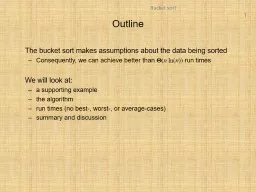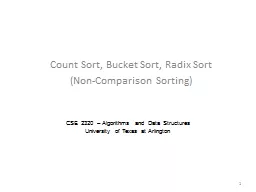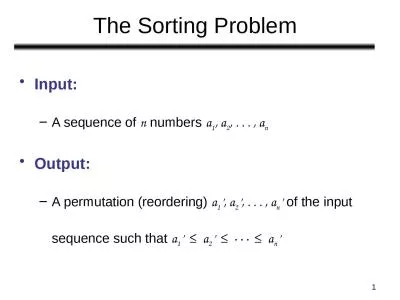PPT-Outline The bucket sort makes assumptions about the data being sorted
Author : kittie-lecroy | Published Date : 2019-11-21
Outline The bucket sort makes assumptions about the data being sorted Consequently we can achieve better than Q n ln n run times We will look at a supporting example
Presentation Embed Code
Download Presentation
Download Presentation The PPT/PDF document "Outline The bucket sort makes assumptio..." is the property of its rightful owner. Permission is granted to download and print the materials on this website for personal, non-commercial use only, and to display it on your personal computer provided you do not modify the materials and that you retain all copyright notices contained in the materials. By downloading content from our website, you accept the terms of this agreement.
Outline The bucket sort makes assumptions about the data being sorted: Transcript
Download Rules Of Document
"Outline The bucket sort makes assumptions about the data being sorted"The content belongs to its owner. You may download and print it for personal use, without modification, and keep all copyright notices. By downloading, you agree to these terms.
Related Documents














